













The magazine of the art-form of the photo-essay
“A free, really high quality photo-essay magazine. Fabulous!”
Stephen Fry. British actor, writer and film & documentary maker

Oct 2014 back issue

by Alvaro Laiz


Wonderland, the strange inhabitants of Delta Orinoco
Before the late 20th century, the term berdache was widely used by anthropologists as a generic term to indicate
“two-spirit” or transgender individuals.
In Native American societies, berdaches played an important role both religiously and economically. They were given
specific roles in their religion and were not expected to support their family like a male would, but rather they were
required to do some of the women’s work and portray the behaviors and clothing of a woman.
Early Spanish and French explorers and colonizers in North America applied these terms as a means of making sense
of the relationships, anatomical sex, sexual behavior, and social gender role of those individuals they encountered
who fell outside their own conceptual frameworks.
Historically, two-spirit people typically have been well integrated into the life of their tribes, and have often held revered
and honored positions within them. Members of native cultures are often quite reluctant to discuss two-spirit traditions
with outsiders, who they feel may misunderstand them or appropriate them for their own agendas.
The Warao, as it happens in other ethnic groups, consider certain people are neither man nor woman. They are
called Tida Wena. Their inclusion in Warao society goes back to the pre-Columbian traditions mentioned above. Most
of these beliefs were common only half a century ago but now due to the growing acculturation they are facing extintion.
Deep in the swamps of Delta of Orinoco it is still possible to make out their world as it was hundred years ago. Small
and isolated native communities struggle to survive there. The existance of transgender people among the Warao
society could be the last remains of those old pre-Columbian traditions, never photographed before.
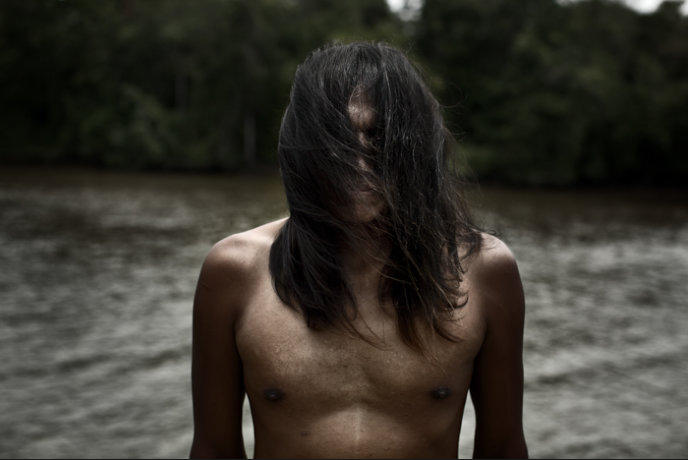
According to Warao myths Kuai-mare was the name of a powerful spirit. It used to walk amongst Warao people with its
face covered. Once a year it shows it, causing hurricanes and floodings all over the Delta. The wisiratu or shaman of
each community is responsible for keeping Kuai-Mare calmed. Many ancient cultures such as Warao consider
shamans to be the intermediaries among nature’s powers and humans. In pre-Columbian societies from South America
it was quite common to find the most powerful shamans behaving as if they had a dual identity or Two-spirits, and even
adopting their opposite gender role.
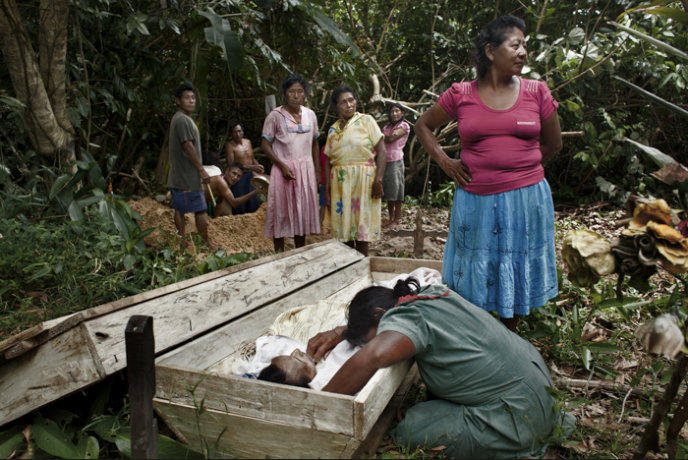
HIV and TB have increased dramatically during the last few years. Despite this, the Venezuelan government refuses to
be honest about the situation. Independent NGOs estimate that between 40 and 80% of the Warao population is
infected with HIV.
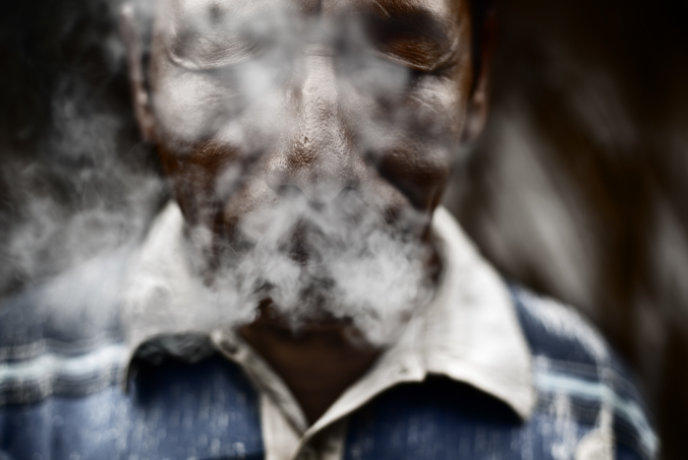
Wisiratu or shaman invoking the ancient spirits of jebus through tobacco smoke.
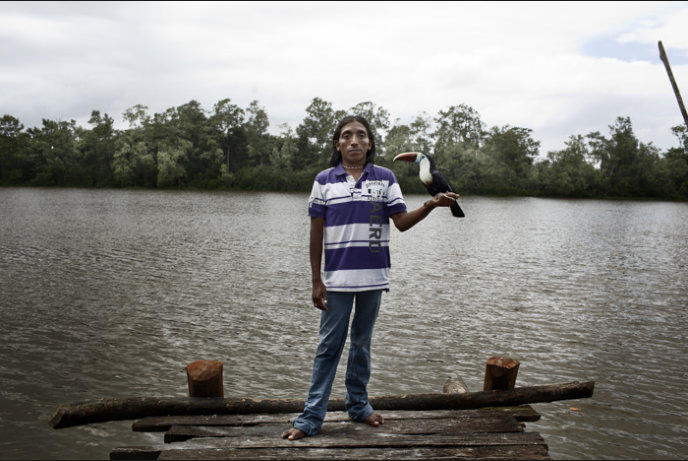
The acculturation is decreasing the acceptance amongst Warao of Tida Wenas. In some places like Kobueruna,
heavily influenced by western culture and its set of values, some of them do not wear women’s clothing anymore to
avoid being harrassed.
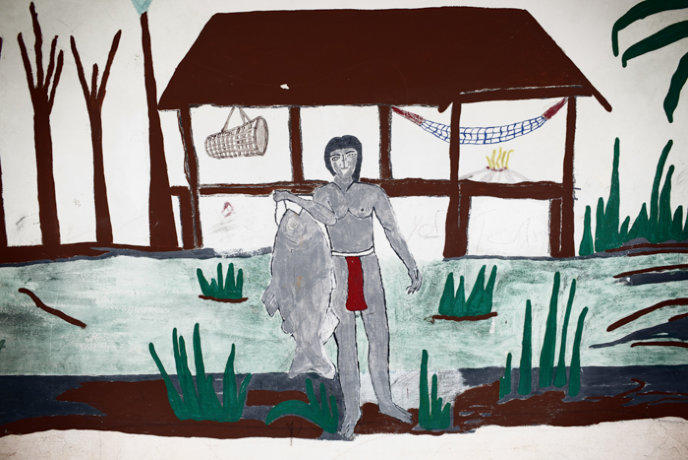
Mural from San Francisco de Guayo´s mission. The mission was founded in 1942 by Capuchin monks to evangelize
and teach the Warao children.
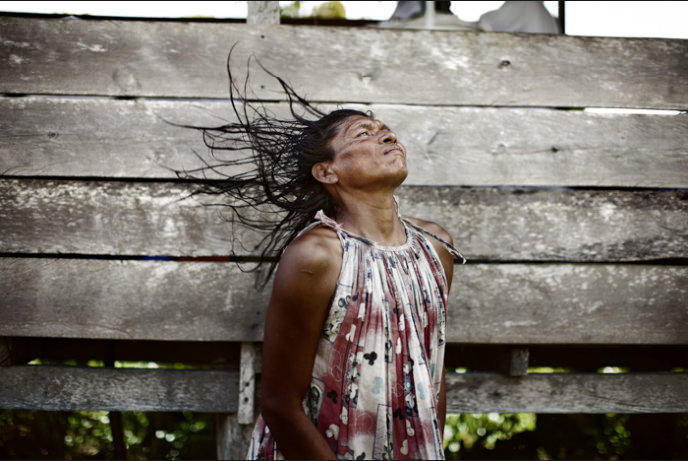
Arsenio Beria a 38 year old tidawena, drying his hair after a long swim in the river after sunset. Some tidawena are
also practitioners of diosoarotu – the owner of God – a novel form of shamanism which assimilated several missionary
practices.
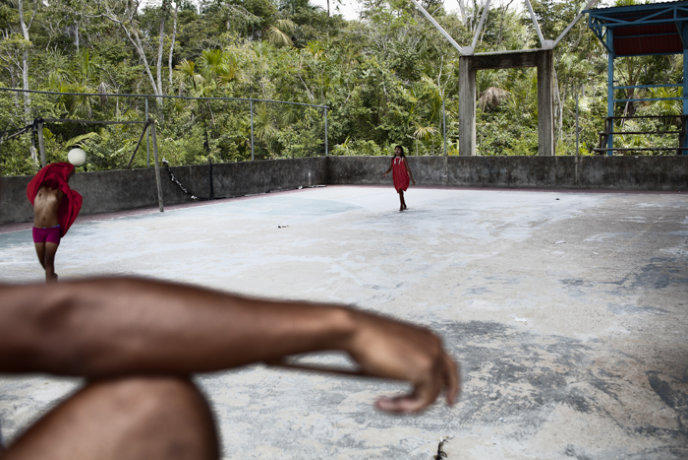
Girls playing volleyball at Murako village´s court. The court was built by the government of Venezuela in 2003. Orinoco
Delta has become an important source of votes for PSUV, even after Chavez´s death.
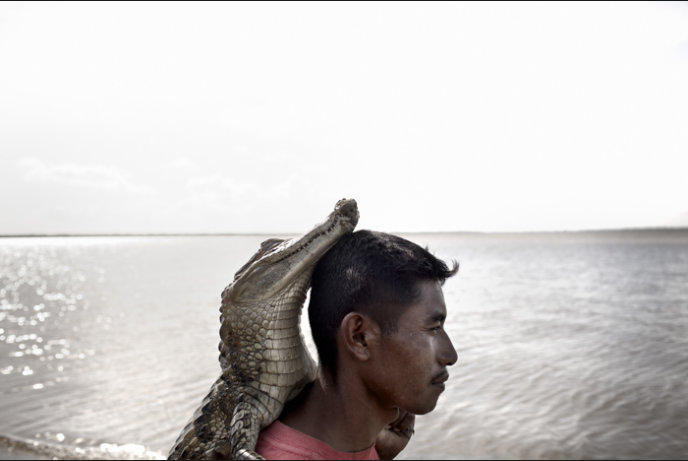
A man carries a recently hunted crocodile. The Orinoco crocodile can grow up to 6 meters long. Although hunting and
selling their skin is a crime, many Warao consider them a delicacy and keep on hunting them as their ancestors did.
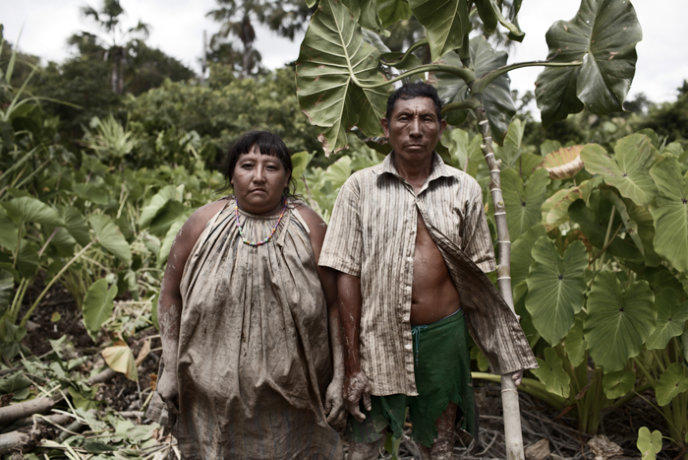
"The nation of the Guaraounos, whose whole existence, it may be said, is closely linked with that of the moriche palm-
tree. It is curious to observe in the lowest degree of human civilization the existence of a whole tribe depending on
one single species of palm-tree, similar to those insects which feed on one and the same flower, or on one and the
same part of a plant." Le Voyage aus règions equinoxiales du Nouveau Continent Alexander von Humboldt, 1799-1804.
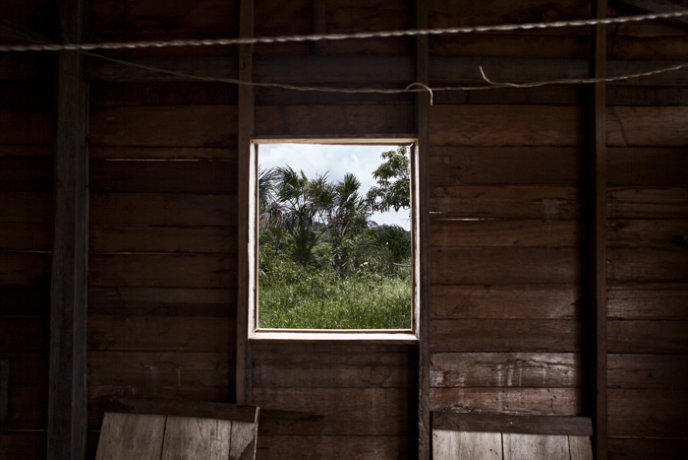
The Warao indians consider they are connected to Nature, so traditional palafites or hanokos are built without walls as
part of the jungle. The changes in the traditional Warao architecture are just the most visible example of the
acculturation and lost of identity process the indians are suffering.
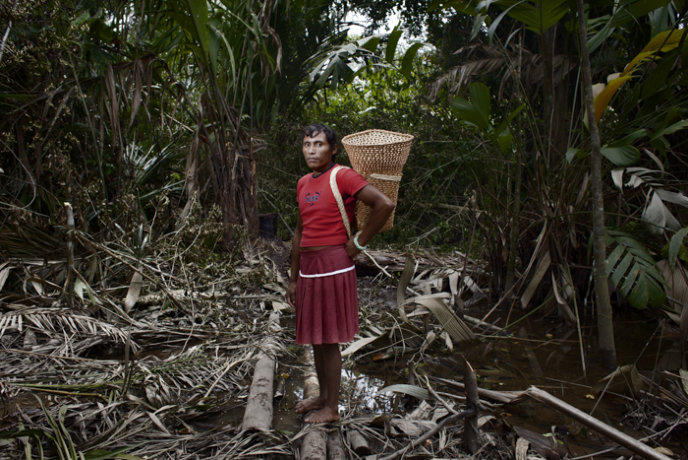
As a result of their nomadic traditions, Warao people are used to settling into the jungle for two to six months hunting
and collecting goods. A young transgender is portrayed while collecting yuruma in the deep of the jungle.
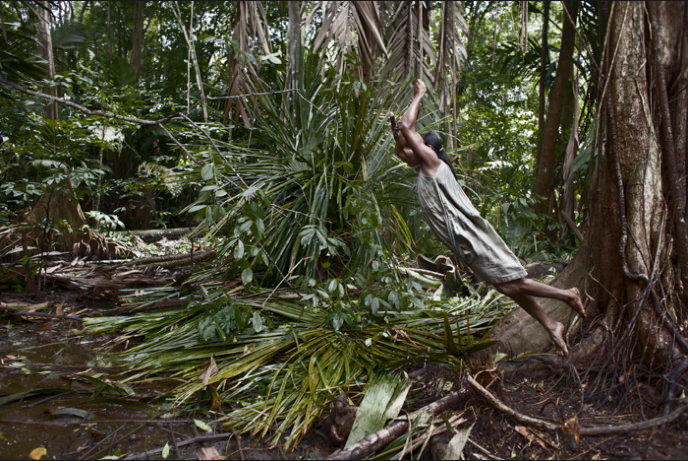
A Tidawena jumps over a puddle using a vine in the deep of the Orinoco´s swamp forest ."The Guaraons run with
extreme address on muddy lands, where the European, the Negro, or other Indians except themselves, would not dare
to walk; and it is, therefore, commonly believed, that they are of lighter weight than the rest of the natives. This is also
the opinion that is held in Asia of the Burat Tartars. The Guaraons whom I saw were of middle size, squat, and very
muscular. The lightness with which they walk in places newly dried, without sinking in, when even they have no planks
tied to their feet, seemed to me the effect of long habit. Though I sailed a considerable time on the Orinoco, I never
went so low as its mouth. Future travellers, who may visit those marshy regions, will rectify what I have advanced". Le
Voyage aus règions equinoxiales du Noveau Continent. Alexander von Humboldt. 1799-1804
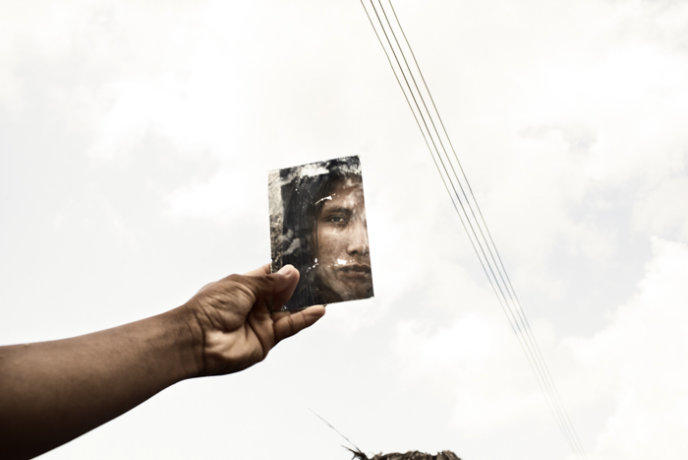
Identity is not a static concept, but a fluent mixture of influences, both internal and external, which conform the way we
face the world and how the world reflects this image to others. For Tidawena, the Warao word for transgender, the
identity is a matter of gender but also a cultural and ethnic issue. Sanse, a 16 years old Tidawena, watches his
reflection on an old mirror while he combs his hair in Murako village. Only women and transgender/homosexuals wear
long hair among Warao people.












